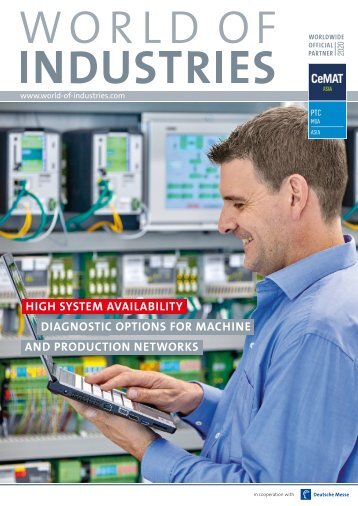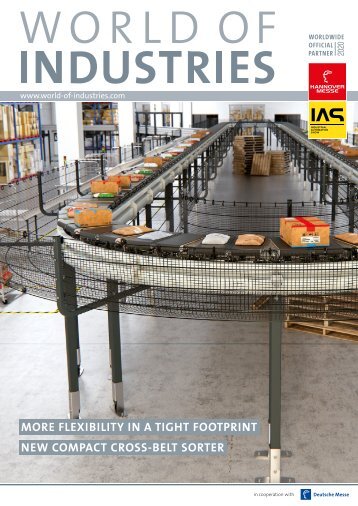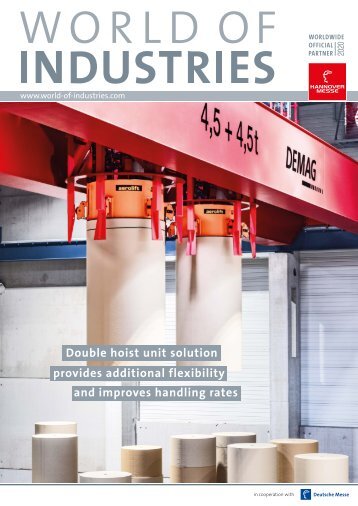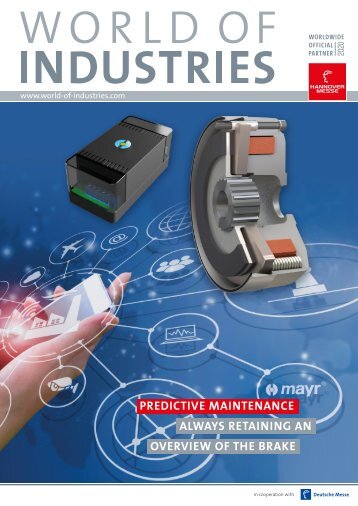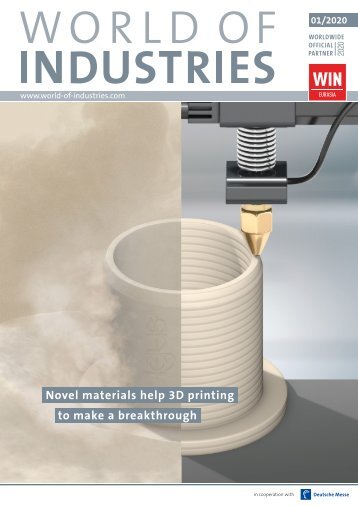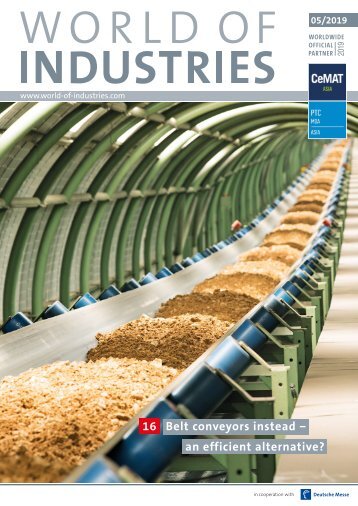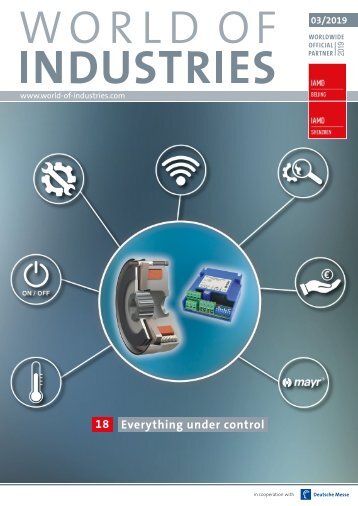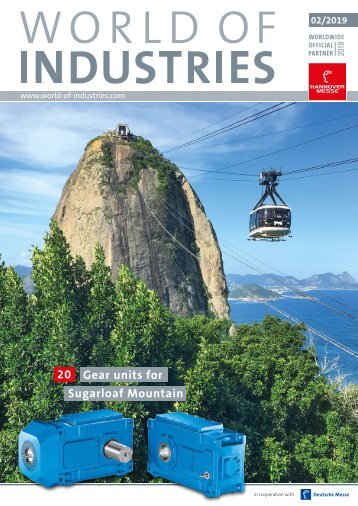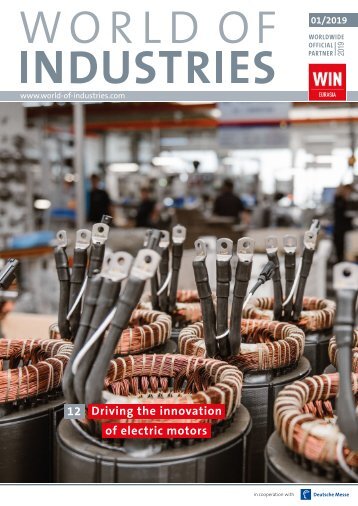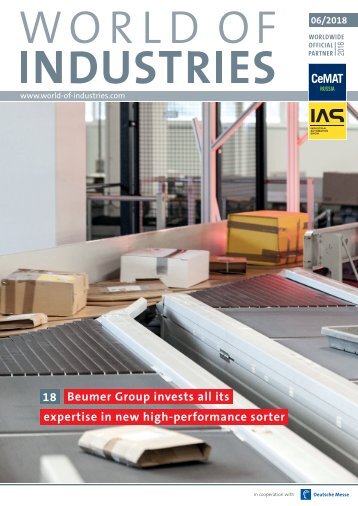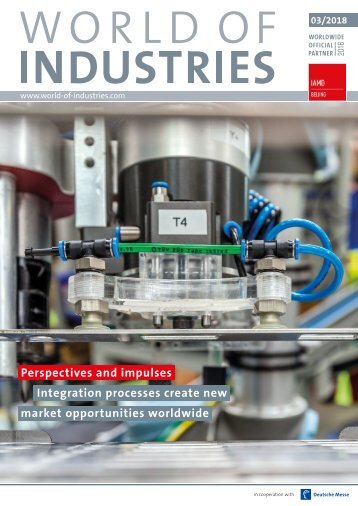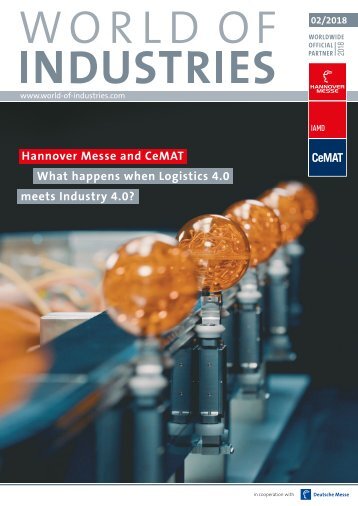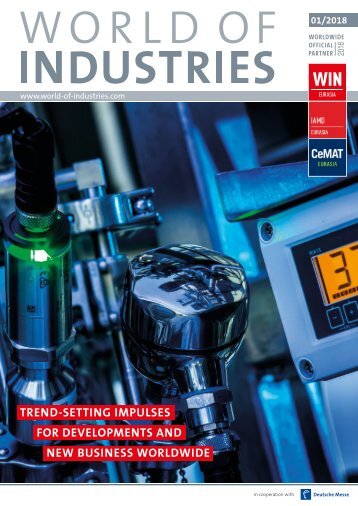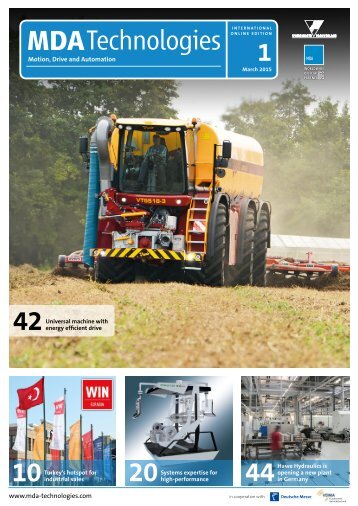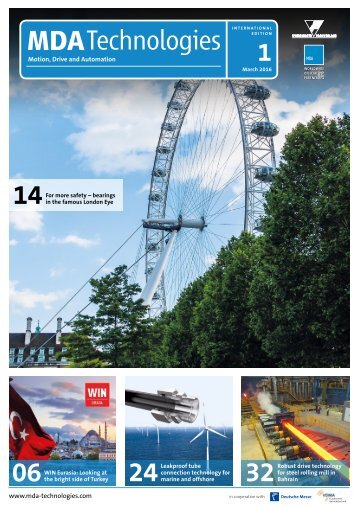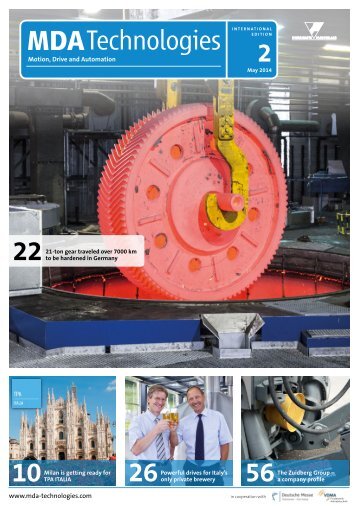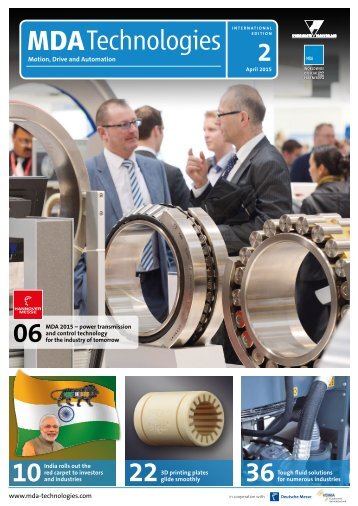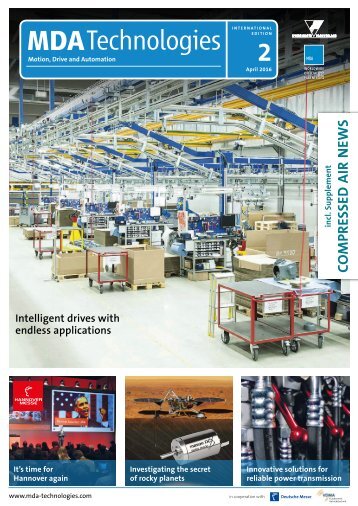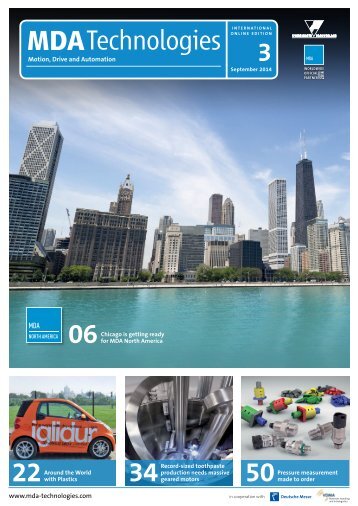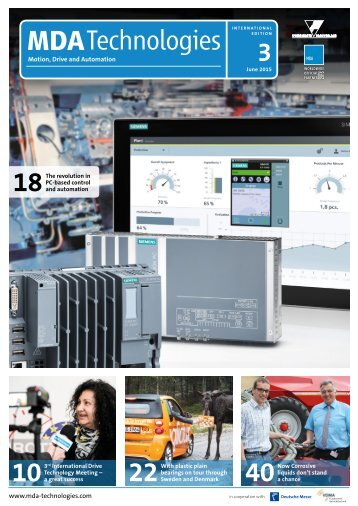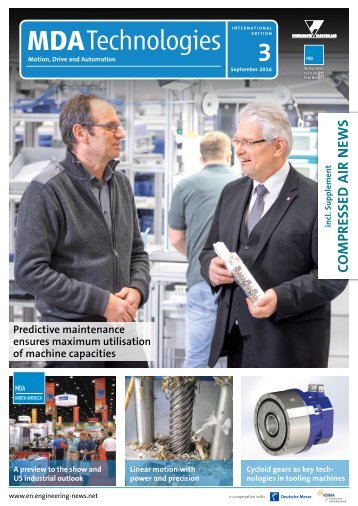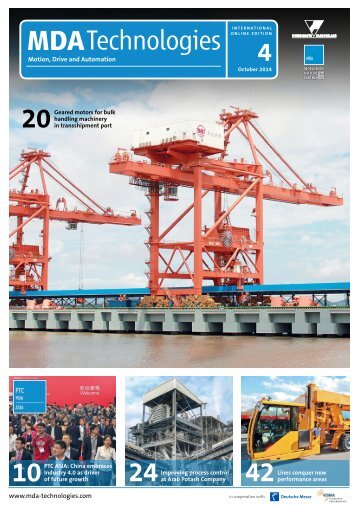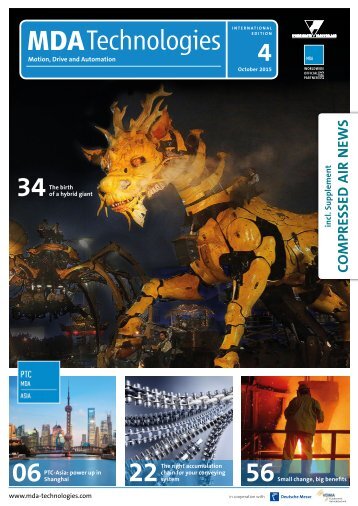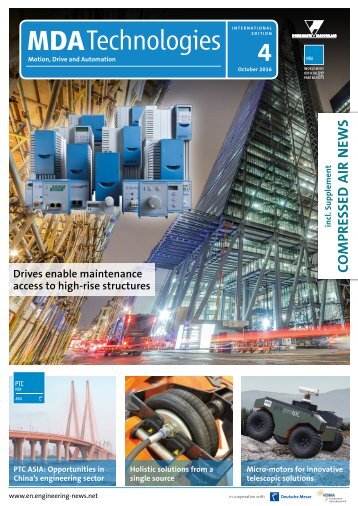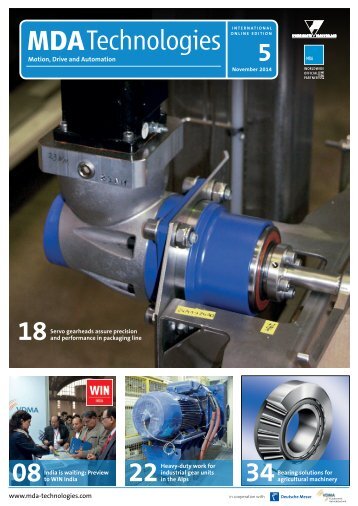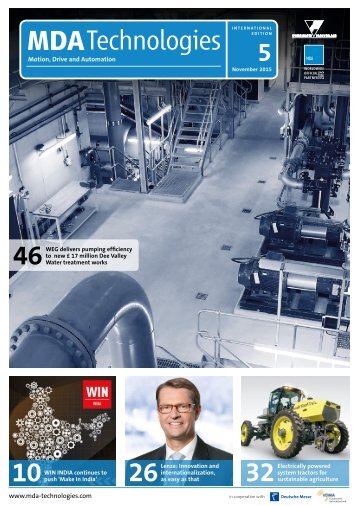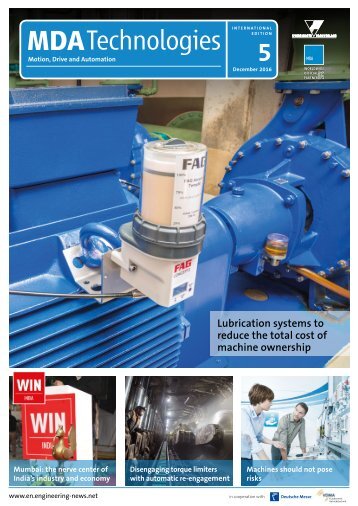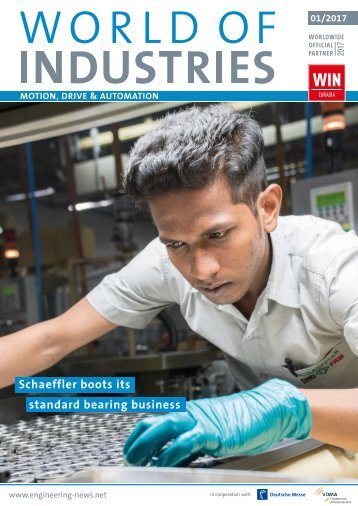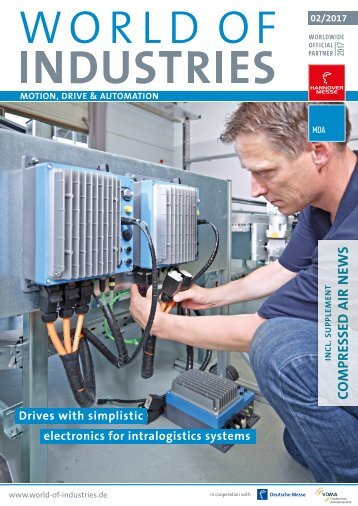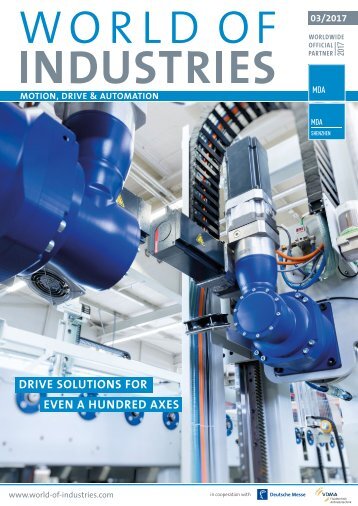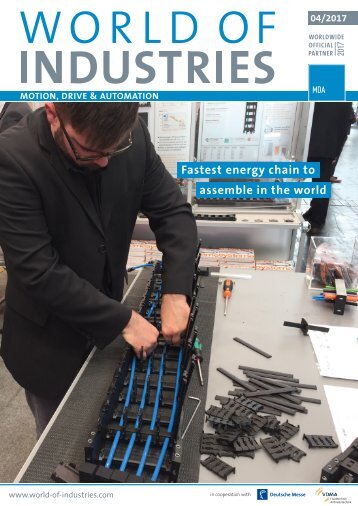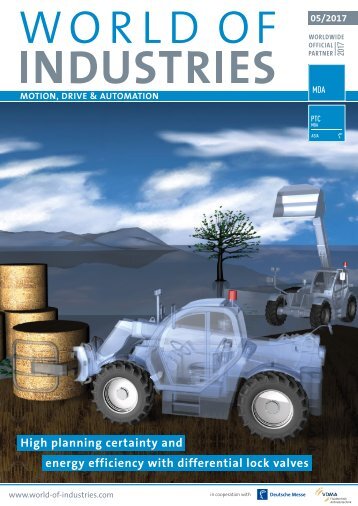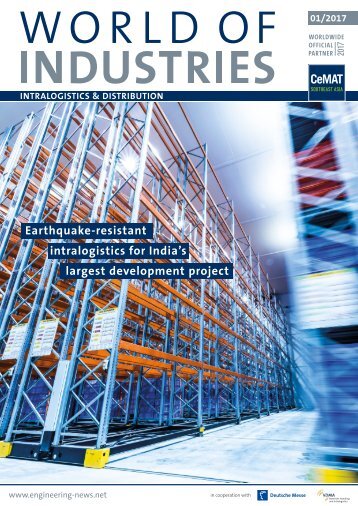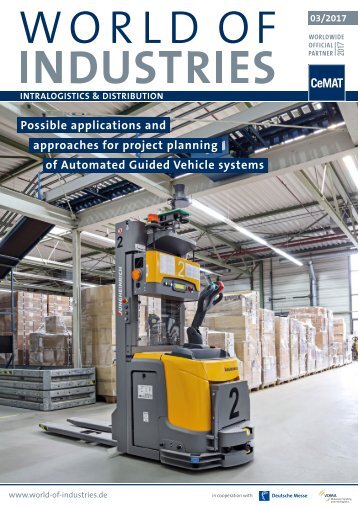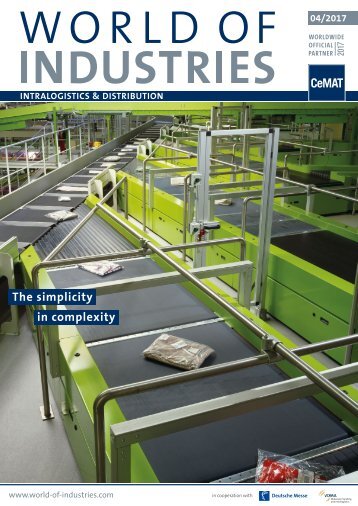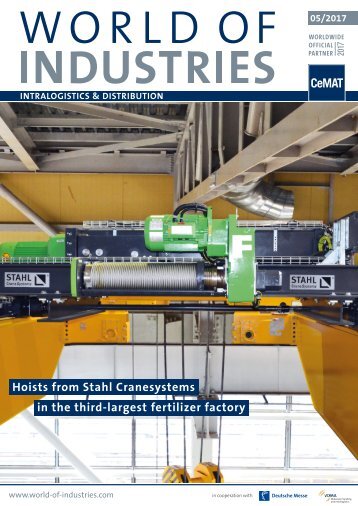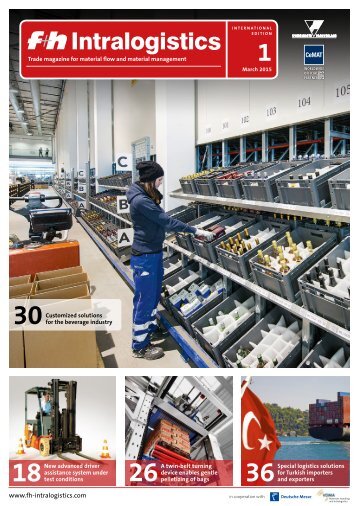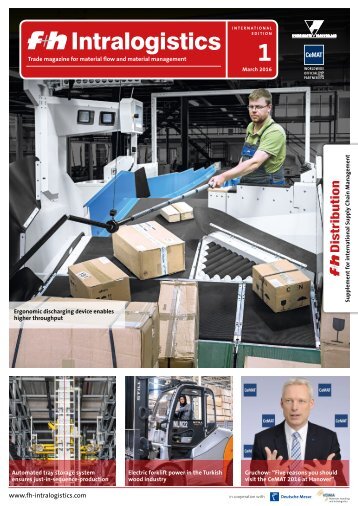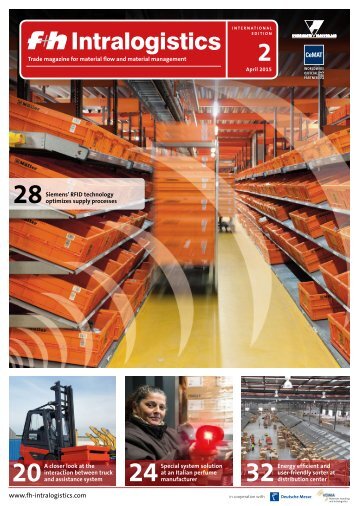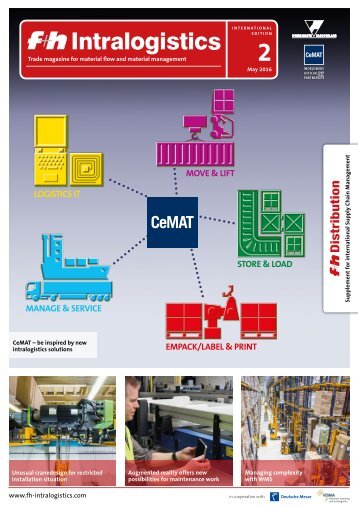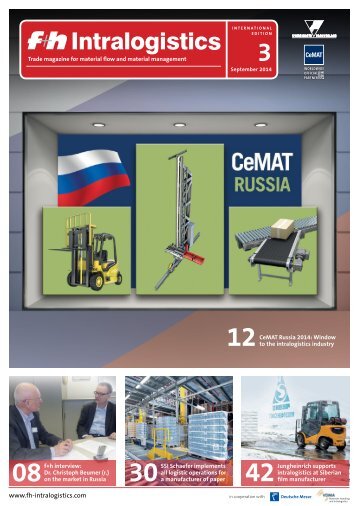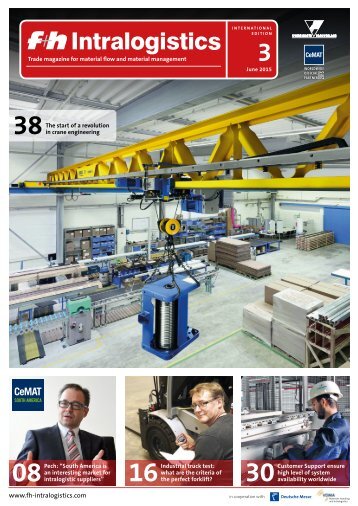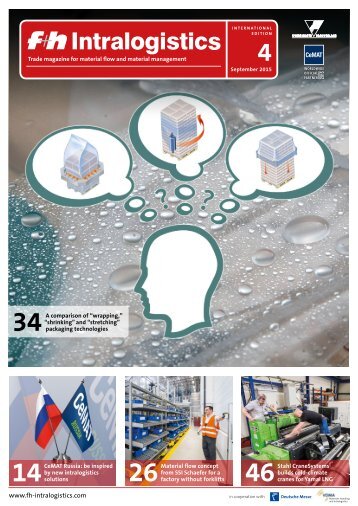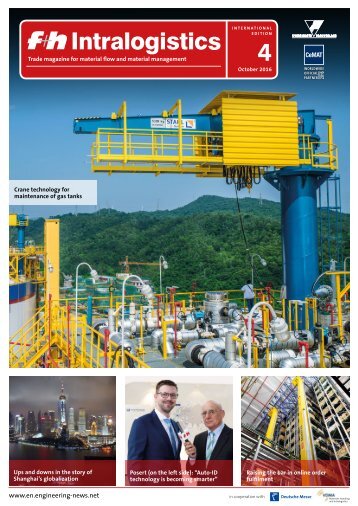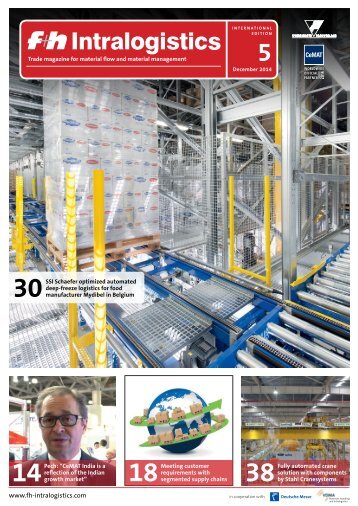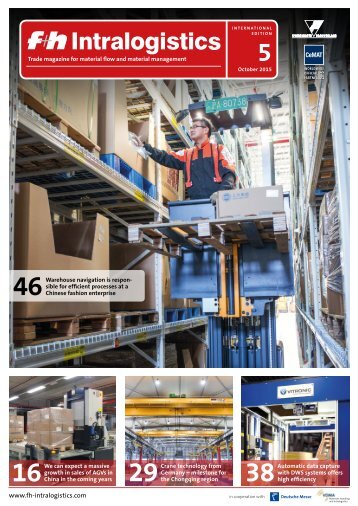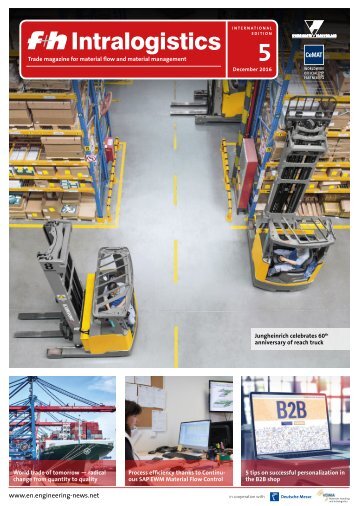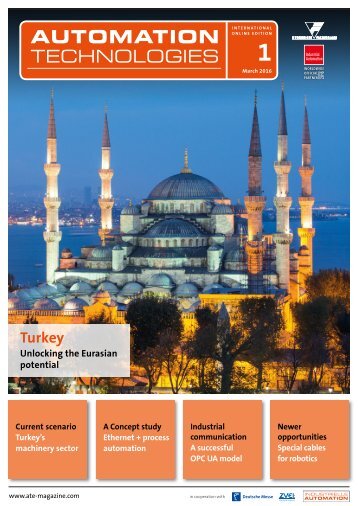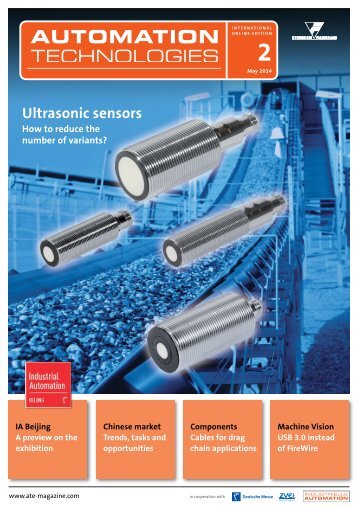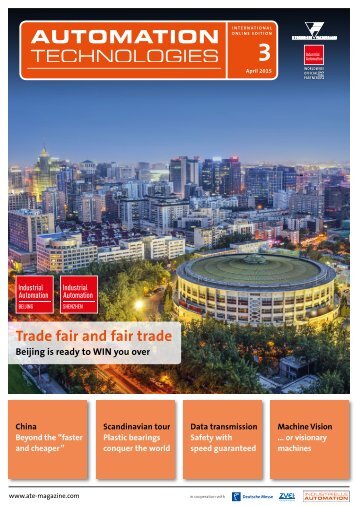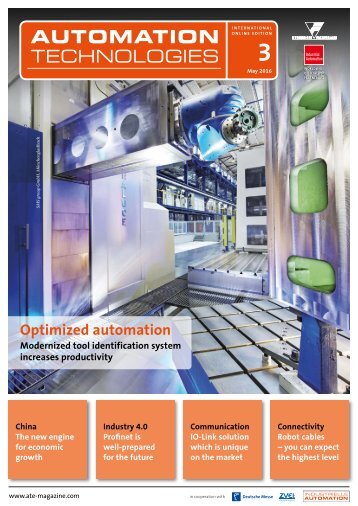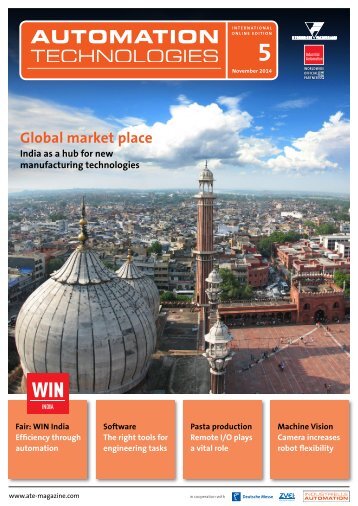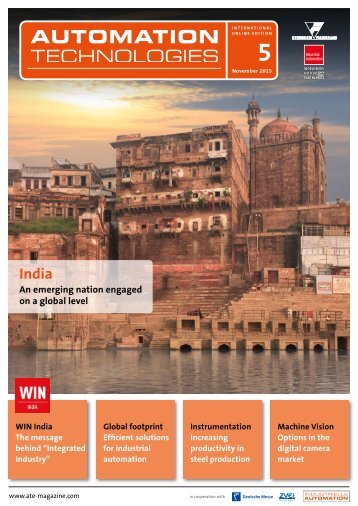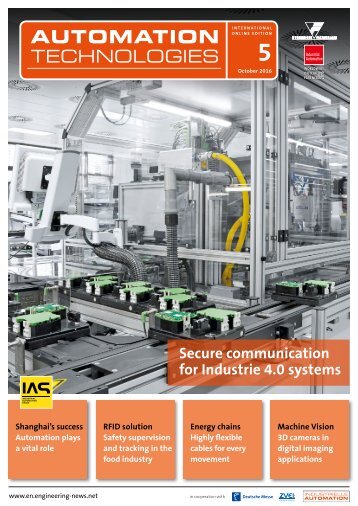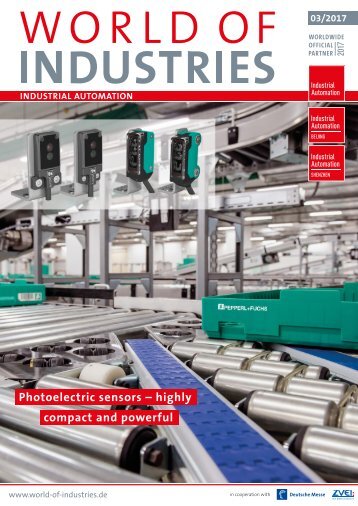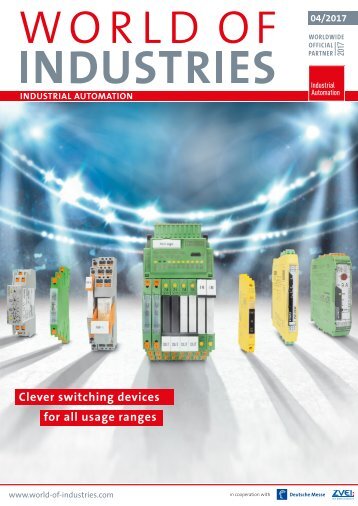f+h Intralogistics 4/2015
- Text
- Fuh
- Intralogistics
CRANES & HOISTS SABETTA
CRANES & HOISTS SABETTA HAMBURG KÜNZELSAU Stahl CraneSystems builds cold-climate cranes for Yamal LNG At present one of the most ambitious LNG plants ever built is rising on the Yamal peninsula in Russia. In a region, where some years the thermometer never rises above 0 °C, which is not accessible by land and is usually snow-covered, the JSC Yamal LNG Consortium, Yamal/Russia, in cooperation with the French EPC contractor Technip, is building three LNG trains for liquefying natural gas. E specially the energy sector is of particular importance for Russia’s economy and for the international energy supply. Particularly, the Yamal Peninsula is home of some of the world’s largest natural gas reserves: And from there, Russia plans to export liquid gas to both Asia and Europe from 2017 onwards. Operation in the partially open, unheated buildings in these extremes of temperature is a major challenge for the manufacturers of the technical equipment. On the one hand, the correct functioning and reliability of the equipment must be guaranteed, on the other hand explosion protection regulations must be observed. In complex projects of this kind, Technip relies on experienced suppliers, in the case of crane technology on Stahl CraneSystems, Künzelsau/Germany. The South German experts for crane technology and explosion protection developed six cold-climate cranes of 100 t lifting capacity each to be used in installing and maintaining Yamal LNG’s gas compressors. 46 f+h Intralogistics 4/2015
CRANES & HOISTS 02 All inside: wire rope hoists and crane control are inside the housing. A heating system ensures that the temperature inside the housing never drops below -20 °C In addition to the durability of the material, Stahl CraneSystems had to ensure that the explosion protection complied with Atex directives. As the crane technology components are only Atex-certified down to -20 °C and recertifying at the renowned German Physico-Technical Test Institute PTB would have taken several years, Stahl Crane Systems opted for their cold-climate crane concept that had already proven itself in other plants in Russia. The idea behind it: all hoist and trolley components are enclosed in housings and equipped with heaters. The temperature inside the housing can be maintained at above 20 °C by means of a separate safety circuit so that the crane is always ready for operation and the explosion protection is constantly maintained. To ensure this, the crane control evaluates several temperature sensors before the crane can be put into operation. Crane bridges, crab beams, endcarriages and crabs are manufactured from a special low-temperature steel P355 NL1. The notch impact strength of the steel is 27 Joule at -50 °C, which the crane manufacturer confirmed in its own tests. Normal steel with a notch impact strength of 27 Joule at 20 °C would become brittle in these extreme conditions. Reliable technology 01 Final check: The customized hoists shortly before being delivered to the crane builder Yamal LNG needs cranes with lifting capacities of 100 t in the gas compression units for maintenance work on the heavy gas compressors. This lifting capacity was provided by the AS 7 ZW ex, comprising two coupled AS 7 wire rope hoists – robust, long-lived wire rope hoists from Stahl CraneSystems, field-proven for decades. For lighter loads and fast hoisting speeds, each of the cranes is equipped with an auxiliary hoist from the SH ex series of wire rope hoists, this is also mounted on the large crab inside the heated housing. Hoists for LNG plants are not standard solutions, as requirements vary depending on pump manufacturer, systems builder, EPC contractor and country of destination. What is required are thus reliable series products that can be individually adapted. LNG hoists from Stahl CraneSystems are based on the same modular design concept as the series hoists. Even as a modified customized solution, the individual components come from our own series production, their technical structure is well thought through and spare parts supply and simplicity of maintenance are guaranteed for decades. Duration of use is difficult to estimate in particular in the field of energy plants and offshore solutions. Often the previously calculated useful life is exceeded and systems are in use for not just 20 but possibly 30 or 40 years. As with all technical components, regular maintenance and the availability of spare parts is the key to a long service life for crane technology too. f+h Intralogistics 4/2015 47
- Page 1 and 2: Intralogistics Trade magazine for m
- Page 3: TABLE OF CONTENT 06 News an informa
- Page 6 and 7: Worldwide News Additional huge join
- Page 8 and 9: INVESTMENT POLICY The sanctions and
- Page 10 and 11: INVESTMENT POLICY 02 What should th
- Page 12 and 13: GLOBAL BUSINESS Hellmann expands in
- Page 14 and 15: CEMAT RUSSIA NEWS Opportunities in
- Page 16 and 17: CEMAT RUSSIA NEWS part of this. The
- Page 18 and 19: INTRALOGISTICS Specific solutions f
- Page 20 and 21: INTRALOGISTICS Intralogistics at Bi
- Page 22 and 23: MATERIAL FLOW Well maintained lasts
- Page 24 and 25: MATERIAL FLOW often parts have been
- Page 26 and 27: MATERIAL FLOW Tugger train solution
- Page 28 and 29: MATERIAL FLOW 02 Source pallets wit
- Page 30 and 31: MATERIAL FLOW Mechanized unloading
- Page 32 and 33: MATERIAL FLOW 03 With their special
- Page 34 and 35: PACKAGING TECHNOLOGY A comparison o
- Page 36 and 37: PACKAGING TECHNOLOGY requires a lot
- Page 38 and 39: WAREHOUSING Grob relies on automate
- Page 40 and 41: SOFTWARE Bringing complex process a
- Page 42 and 43: INDUSTRIAL TRUCKS I FORKLIFT TEST R
- Page 44 and 45: INDUSTRIAL TRUCKS I FORKLIFT TEST 0
- Page 48 and 49: CRANES & HOISTS cal expertise but i
- Page 50 and 51: CRANES & HOISTS The Demag KBK Aluli
Inappropriate
Loading...
Mail this publication
Loading...
Embed
Loading...

